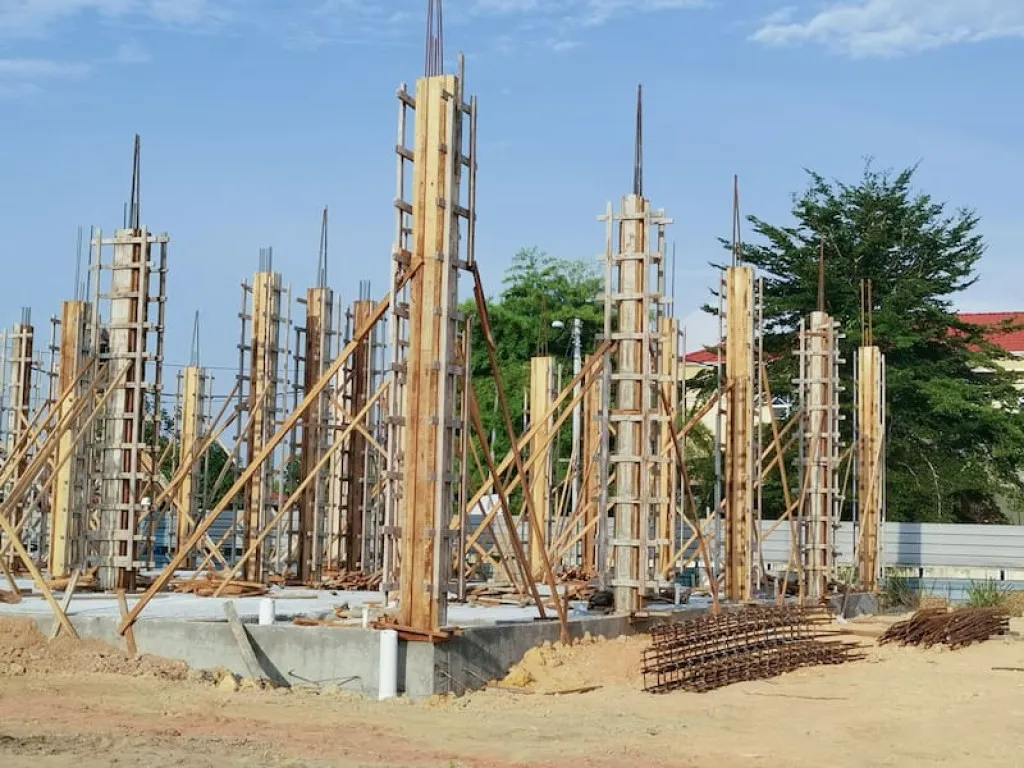In construction, the foundation is the backbone of a building that determines its strength and stability. Even today, one of the oldest and most widely used foundation types is the river rock foundation.
Made from naturally formed rocks shaped by water erosion, this foundation is known for its exceptional durability and ability to support heavy loads. Besides their strength, river rock foundations are popular due to their easy availability.
With a variety of sizes and textures, river rock foundations offer an efficient and budget-friendly solution for building everything from homes to large-scale infrastructure. Dive into the details of river rock foundations in the article below to learn more!
What Is River Rock Foundation?
A river rock foundation serves as the structural base of a building, made from naturally occurring river rocks. These rocks form over time due to repeated water erosion and are easily found in different sizes.
River rocks vary in texture. Typically, they have sharp edges with smooth surfaces, holes, cracks, and sometimes even color variations. While they naturally exist in the wild, many are now also produced artificially.
Pros and Cons of Using River Rock Foundations
In general, here are some advantages of a river rock foundation:
- Cost-effective: Compared to other foundation types, river rock foundations are relatively affordable due to the availability of materials, which helps minimize transportation and logistics expenses.
- High strength and durability: Natural river rocks offer excellent durability, ensuring a solid, stable foundation that withstands temperature fluctuations and weather conditions.
- Relatively easy installation: In addition to being budget-friendly, river rock foundations are fairly simple to install. However, careful precision is required to fill gaps properly for optimal strength and quality.
- Easily accessible: River rock foundations are commonly used in construction, not just for foundations but for various other purposes. That’s why they’re easy to find at local hardware stores.
On the other hand, river rock foundations do have some downsides, such as:
- Limited suitability for multi-story buildings: This foundation type isn’t the best choice for taller structures, particularly those exceeding two floors. However, if the soil is stable and the foundation is properly constructed, it can still support a two-story house.
- Not recommended for soft soil: Because it tends to absorb water, its durability may weaken over time, especially in moisture-prone areas.
Read also: Bridge Construction Types and Foundation Varieties
How to Calculate the Volume of a River Rock Foundation
To determine the volume of a river rock foundation, you first need to know its length and cross-sectional area (the area of a vertical slice through the foundation). Once you have these values, apply the following formula:
- If the cross-sectional area is known, Volume = Cross-sectional area × Foundation length
- If the cross-sectional area is unknown, Cross-sectional area = (Top width + Bottom width) × Height / 2
- Combined formula, Volume = [(Top width + Bottom width) × Height / 2] × Foundation length
How to Determine the Right Size for a River Rock Foundation
The size of a river rock foundation varies, typically taking a trapezoidal shape with a bottom width of 60–80 cm, a top width of 25–30 cm, and a height of 60–80 cm. To ensure the foundation size fits your construction needs, consider the following factors:
1. Foundation Height and Width
The first thing to consider when determining the size of a river rock foundation is its width and height. Keep in mind that the top and bottom dimensions differ. The wider the top, the broader the base needs to be for stability.
Besides width, height is equally important. If the soil is unstable, increasing the foundation height will enhance structural strength.
2. Rock Combination
Next, pay attention to the type of rocks used. Combine river rocks with trapezoidal-shaped stones for a sturdier result. To improve durability, reinforce the structure with other building materials such as Portland cement, sand, and lime.
3. Sand Bedding Thickness
The final aspect to ensure a well-sized river rock foundation is the thickness of the sand bedding. Follow the standard depth of around 10 cm from the ground surface.
Make sure this thickness is neither less nor more than 10 cm, as it plays a crucial role in supporting the foundation and ensuring it can effectively bear the building’s load.
Read also: Types of Building Foundations for Sturdy High-Rise Structures
How to Build a River Rock Foundation
Here are the steps to constructing a river rock foundation:
- Site preparation: Start by clearing the construction site of any debris or unwanted materials until the ground is level and stable.
- Laying the foundation base: Shape the base according to the planned design and dimensions. Carefully arrange the river rocks to ensure a sturdy and well-balanced foundation.
- Stacking the rocks: Place the river rocks layer by layer on the prepared base, ensuring they are neatly and securely positioned to maintain stability.
- Adding sand and cement: Fill the spaces between the rocks with a sand-cement mixture, ensuring an even and compact distribution to strengthen the foundation.
- Building up layers: Repeat the process of layering rocks, sand, and cement until you reach the required foundation height. Each layer should be appropriately compacted to ensure durability.
- Placing the foundation plate: Once the foundation reaches the desired height, install it on top, ensuring it's level and secure for optimal support.
- Final adjustments and compaction: After all layers are complete, do a final round of compaction and finishing to ensure the foundation is solid and ready to bear the building’s load.
River rock is one of the best choices for a simple home foundation, as it offers strength, durability, and affordability. However, a high-quality adhesive is essential to ensure the best results.
That’s where Semen Merah Putih Watershield steps in! With its powerful bonding strength and long-lasting durability, it ensures your river rock foundation stays rock-solid for years to come.
Our Water Repellent Technology provides Triple Protection, shielding your structure from moisture intrusion from three sources: external exposure, internal humidity, and ground seepage, to ensure a sturdier, longer-lasting, and low-maintenance building.
Semen Merah Putih Watershield is a premium multipurpose cement that outperforms regular cement. It’s perfect for various applications, including foundations, concrete slabs, casting, bricklaying, plastering, and finishing.
Contact us today for the best construction solutions for your project! We’re ready to support your success with top-quality cement and outstanding service.
Read also: Foundation for a 2-Story House: Types & Key Influencing Factors



